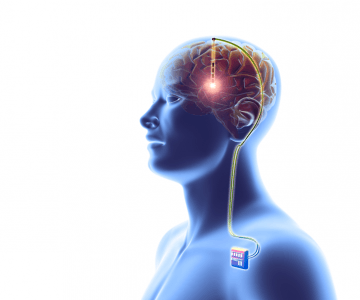Lone Frank in Nautilus:
 It is a good question, but I was a little surprised to see it as the title of a research paper in a medical journal: “How Happy Is Too Happy?” Yet there it was in a publication from 2012. The article was written by two Germans and an American, and they were grappling with the issue of how we should deal with the possibility of manipulating people’s moods and feeling of happiness through brain stimulation. If you have direct access to the reward system and can turn the feeling of euphoria up or down, who decides what the level should be? The doctors or the person whose brain is on the line?
It is a good question, but I was a little surprised to see it as the title of a research paper in a medical journal: “How Happy Is Too Happy?” Yet there it was in a publication from 2012. The article was written by two Germans and an American, and they were grappling with the issue of how we should deal with the possibility of manipulating people’s moods and feeling of happiness through brain stimulation. If you have direct access to the reward system and can turn the feeling of euphoria up or down, who decides what the level should be? The doctors or the person whose brain is on the line?
The authors were asking this question because of a patient who wanted to decide the matter for himself: a 33-year-old German man who had been suffering for many years from severe obsessive-compulsive disorder and generalized anxiety syndrome. A few years earlier, the doctors had implanted electrodes in a central part of his reward system—namely, the nucleus accumbens. The stimulation had worked rather well on his symptoms, but now it was time to change the stimulator battery. This demanded a small surgical procedure since the stimulator was nestled under the skin just below the clavicle. The bulge in the shape of a small rounded Zippo lighter with the top off had to be opened. The patient went to the emergency room at a hospital in Tübingen to get everything fixed. There, they called in a neurologist named Matthis Synofzik to set the stimulator in a way that optimized its parameters. The two worked keenly on the task, and Synofzik experimented with settings from 1 to 5 volts. At each setting, he asked the patient to describe his feeling of well-being, his anxiety level, and his feeling of inner tension. The patient replied on a scale from 1 to 10.
The two began with a single volt. Not much happened. The patient’s well-being or “happiness level” was around 2, while his anxiety was up at 8. With a single volt more, the happiness level crawled up to 3, and his anxiety fell to 6. That was better but still nothing to write home about. At 4 volts, on the other hand, the picture was entirely different. The patient now described a feeling of happiness all the way up to the maximum of 10 and a total absence of anxiety.
More here.
